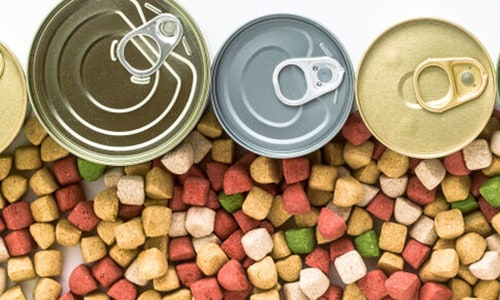
Issues With Sustainability in the Pet Food Industry
Roughly 86.9 million families, or 66% of U.S. households, are pet owners, per a 2023-24 American Pet Products Association (APPA) survey.
There are a whopping 191 million pets (cats & dogs) in the U.S. alone, which is more than half of the human population in the U.S., which is about 340 million. Furthermore, U.S. pet owners spent $58.1 billion on pet food in 2022. These numbers are estimated to increase to $62.7 billion in 2023, putting the sustainability of our planet at stake.
Environmental Impacts of the Pet Food Industry
An increase in the human population tends to lead to increased household pets. This increase puts a higher demand on the pet food industry. This demand can lead to adverse environmental impacts, especially when pet owners insist on premium meat for their furry friends. Yet, a number of pet owners still prefer human-grade food for their pets. This demand gives rise to several challenges in maintaining environmental sustainability, leading to:
- A strain on land, water, and food resources
- Carbon emissions and air pollution
- Landfills filled with waste from the food industry
The land required to satisfy the requirements of pet food is increasingly growing to extreme levels. In 2020, scientists found that the pet food industry requires an area two times UK’s size to meet global pet food demand.
Additionally, a study found that global pet food production results in millions of tons of greenhouse gas emissions per year. This level is higher than the carbon footprints of several nations.
With the rising demand for pet food, it is essential to develop sustainability in the pet food industry to minimize its environmental impact.
Mitigating Environmental Impact
Pet food companies are adopting various strategies to mitigate their industry’s ecological impact. They have turned to the following practices to ensure sustainable pet food production:
- Using meat co-products such as bones, fat, blood, feathers, and internal organs which is regarded as inedible by humans.
- Sourcing ingredients with minimal use of non-renewable energy sources.
- Ensuring the protection of ecosystems and biodiversity.
- Reducing the use of meat for protein sources and using fish and insect-based sources instead.
- Including plant-based proteins from vegetables in pet food after consulting with a veterinarian.
Sustainable Pet Food Production at the Industrial Level
Besides adopting the above practices, industries must keep up with consumer trends and growing demand. The pet food industry must produce pet food in a way that doesn’t greatly hurt the environment.
The manufacturers must be ready to reconfigure their production lines with eco-friendly methods and new equipment for processing pet food.
For instance, an efficient mixing process is crucial to produce pet food sustainably. Large-scale and efficient mixers are vital since they provide the following benefits:
- Ingredient optimization
- Consistency and quality control
- Production and energy efficiency
- Waste reduction
Final Reflections
A thoughtful revival of industrial production can go a long way in dealing with sustainability issues in the pet food industry. In a NielsenIQ 2023 Sustainability Report, 92% of consumers said sustainable practices are important to them.
Fortunately, pet food industry owners recognize the importance of green practices in manufacturing. They are adopting sustainable strategies to realign their production lines with the changing times. S. Howes is a pioneer in manufacturing various processing equipment for the pet food industry. Contact us to learn more about how we can help with solutions for pet food production.